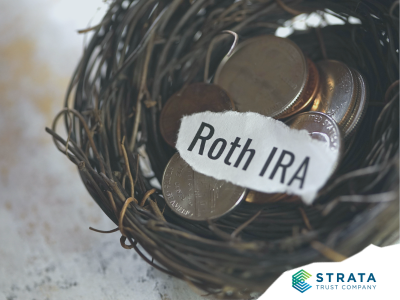It is important for IRA owners and beneficiaries to understand the required minimum distribution (RMD) prerequisites and learn how to reduce unnecessary taxes. If an accountholder or beneficiary misses an RMD payment or does not take enough, they can be fined up to a 25% excise penalty tax on the amount that should have been withdrawn. Even if RMDs don’t apply to you now, you might want to consider certain steps that may reduce or eliminate your RMD requirements in the future. Explore how to unleash the complete advantages of your retirement savings.
Minimizing RMDs
To fully maximize the potential of your tax-advantaged IRA, careful consideration of your chosen beneficiary(ies) is crucial. In addition, effective management of your IRA assets and consistently updating your records play a vital role in minimizing RMDs.
Name the “right” beneficiaries – Let’s face it: you wouldn’t name your estranged brother as a beneficiary instead of your spouse or children just to reduce the RMD that needs to be taken, but considering the death payout options of your beneficiaries is time well spent. For example, if a trust is being named as a beneficiary, designating a named beneficiary might make more sense. When a trust is the beneficiary, certain limitations apply; whereas naming a beneficiary—such as a spouse—would offer a spousal transfer of the IRA assets and be able to defer or minimize taxes. If it has been a while since researching beneficiary rules (especially in light of the IRS’s new RMD regulations), you might want to revisit who you’ve named as beneficiaries—and speak to your tax advisor, attorney, or other financial professional about how best to do it.
Convert Traditional IRA assets to a Roth IRA – This approach isn’t for everyone. Many variables dictate whether this move makes sense for you. You should seek competent legal or accounting advice before you convert assets to a Roth IRA—but if you do, you will never have to take RMDs from it. Your beneficiaries will, but they will be able to take tax-free distributions. You can learn more about Roth conversions in our article, Considerations for Roth IRA Conversions.
Provide updated, accurate beneficiary information – IRAs are “individual retirement arrangements” —meaning Congress intended IRAs to help savers achieve a secure retirement. But IRAs can also help pass assets on to others, with significant tax advantages. Failing to designate a beneficiary can be a costly mistake. While the new RMD regulations and the 10-year rule have diminished the wealth accumulation options for beneficiaries, they can still gain from a well-considered beneficiary designation. Beneficiary designations should be revisited periodically to ensure that they reflect the IRA owner’s wishes and current situation.
Understanding Commonly Misunderstood Beneficiary Rules
Beneficiaries of all IRAs—Traditional, Roth, SEP, and SIMPLE IRAs—must take distributions, typically either annually or within 10 years. In some cases, both rules apply. Under the proposed RMD regulations that integrate changes in the SECURE Act of 2019, the rules are more complicated than they used to be, and they weren’t that simple to begin with. You can help your beneficiaries be prepared and reduce taxes by ensuring they understand their role and what actions need to be taken. Two very important and commonly misunderstood beneficiary rules are outlined below. While not anyone’s favorite subject, sharing this information with your beneficiaries will be time well spent.
1. Year-of-death RMDs – If a Traditional IRA owner had not taken an RMD in the year of their death, the beneficiaries of the IRA must take that amount out of the inherited IRA(s). Previously, that RMD would need to be paid to beneficiaries by December 31 of the year of death, or the missed RMD would be subject to a penalty. So, if the IRA owner died toward the end of any distribution year, you can see that it might be easy for a beneficiary to miss taking the RMD by December 31. Fortunately, the IRS’s proposed RMD regulations now allow the year-of-death RMD to be taken up until the beneficiary’s tax return due date, including extensions. This relief should make it easier for beneficiaries to satisfy the IRA owner’s missed year-of-death RMD.
2. 10-year rule – Non-spouse beneficiaries who are more than 10 years younger than the decedent must generally deplete the IRA assets by the end of the tenth year following the IRA owner’s death. If a Traditional IRA owner had reached the point where RMDs must be started, such beneficiaries are also required to take annual RMDs during the first nine years of this 10-year period. These yearly payments are based on the beneficiary’s life expectancy. (These rules are complicated, but don’t worry – we will cover them in more detail once the final RMD regulations are released.)
| Example | Jose’s mother died in 2023 at age 82. He’s the beneficiary of her Traditional IRA. Because he’s a non-spouse beneficiary more than 10 years younger than the decedent, he must deplete the inherited IRA by the end of 2033. And because his mother died after she was required to take RMDs, Jose must also take annual payments in 2024 through 2032 based on Jose’s single life expectancy. These yearly RMDs were introduced by the proposed IRS rules, which were released in February 2022. |
This new rule has caused considerable confusion. Fortunately, the IRS has granted relief for those subject to this new “nine-year rule.” IRS Notice 2023-54 states that “the IRS will not assert that an excise tax is due under [Internal Revenue Code] §4974” for those beneficiaries who fail to take an RMD for 2023. Similar relief was granted by the IRS for the 2021 and 2022 tax years.
STRATA IRA RMD Deadline
For STRATA IRA accountholders, if you have not already taken your RMD, now is the time! To avoid potential delays, please submit your RMD request to STRATA no later than December 1st. IRA accounts that hold illiquid assets have longer RMD processing times. In order to avoid last-minute mistakes, it is important to complete the RMD process even earlier to meet the IRS deadline of December 31st and avoid their excise penalty tax. If your assets are illiquid, click to learn more about additional options available to satisfy your RMD.
Much More to Come
Once the IRS makes its RMD regulations final, we will undoubtedly have more to discuss. And while we have no assurance that the rules will change markedly, we should at least have more certainty moving forward. Meanwhile, you can contact our self-directed IRA experts with any questions about your STRATA IRA RMDs or updating your beneficiary information. You can also find a library of information on RMDs through our Self-Directed IRA Knowledge Center.









